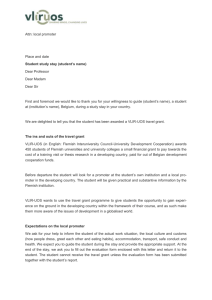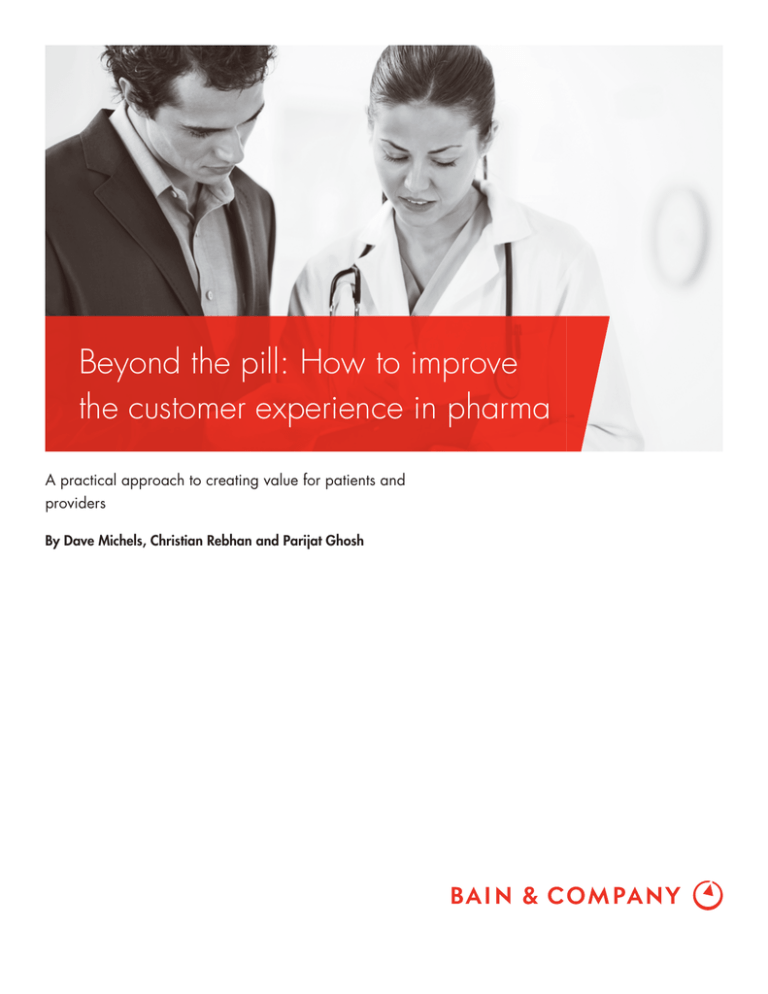
Beyond the pill: How to improve
the customer experience in pharma
A practical approach to creating value for patients and
providers
By Dave Michels, Christian Rebhan and Parijat Ghosh
Dave Michels is a partner in Bain & Company’s Zurich office and a leader in
the firm’s Global Healthcare and Customer Strategy & Marketing practices.
Christian Rebhan is a principal in Bain’s Zurich office and a member of the
Global Healthcare practice. Parijat Ghosh is a partner in Bain’s Mumbai office,
where he leads the Healthcare practice in India.
Copyright © 2014 Bain & Company, Inc. All rights reserved.
Beyond the pill: How to improve the customer experience in pharma
As the old axiom goes, if you can’t measure it, you can’t
manage it. The first element is implementing an
effective tracking mechanism for measuring customer
experience. This tracking creates transparency on where
you stand with your most important stakeholders relative to competitors and over time. The second element
is harvesting feedback from customer-facing staff and
using that feedback to create superior experiences for
customers and a repeatable learning loop for the organization. Finally, fostering a customer-centric mindset
is necessary at every level of the organization, from
frontline employees to the C-suite.
The notion that customer experience matters in pharma
is old news. Every mission statement alludes to it. Every
pharma executive we know wants more focus on it. Yet
pharma was rated among the least customer-friendly
industries in a 2011 Harris poll, down 43% from a similar
poll conducted in 1997.
The challenge starts with the very definition of “customer.”
Patients are clearly the end customers, but pharma
companies often deal more directly with prescribing
physicians, regulators and payers. All three stakeholders
shape the patient experience significantly because they
influence decisions about whether and how to market
individual pharma products. More challenging still, this
complex customer landscape continues to evolve as new
payment structures emerge, patients request more involvement in treatment decisions and pharma companies
engage in more direct-to-consumer marketing.
1. Measurement is relative
Business leaders have long understood the relationship
between scale and profitability. As relative market share
increases, so generally does return on sales. But how do
you build relative market share in the first place, and
what role does customer advocacy play? There is no
question that pharma companies ultimately succeed or
fail based on the clinical efficacy of their medications.
Increasingly, however, the customer experience is also a
significant factor in sorting pharma leaders from followers.
The current model of interaction between physicians
and pharma sales reps is poised for significant change.
Sales reps have increasingly limited access to physicians.
According to a recent survey by ZS Associates, 51% of
physicians were considered accessible in 2014, down from
55% in 2013 and 65% in 2012. Clinical and product information is increasingly ubiquitous, diminishing the value
of nonindividualized information from sales reps. Most
pharma companies don’t have formal feedback mechanisms to address customer concerns. And there is limited
understanding of nonclinical factors that encourage loyalty
or result in detraction. These trends have led pharma companies to adopt a smorgasbord of salesforce effectiveness
initiatives, which arguably focus more on efficiency than
on creating true value for customers.
Happy customers are good for business because they
tend to promote your products and brand. Conversely,
unhappy customers are bad for business because they
tend to spread negative stories about your brand. In an
era when any customer can reach a global audience in
seconds with a single tweet, all companies must reckon
with the growing power of consumer advocacy.
Bain’s Net Promoter SystemSM involves asking customers
a single question—“How likely is it you would recommend
us to a friend?”—and calculating the customer’s Net Promoter
ScoreSM. This score is used to classify customers as promoters, passives or detractors1. The Net Promoter System
also collects verbatim responses that capture many factors
in the customer experience, ranging from price and product
features to the customer’s perception of how the company
responds to his or her needs. Based on extensive research
and years of experience in many industries, the Net
Promoter System provides a simple yet rigorous way
to measure customer advocacy on an ongoing basis.
Why has there been so little progress? Simply put, it’s
much easier to talk about great customer relationships
than to build them. The executives we talk to all understand
the importance of providing customer experiences that
create advocates for their products and brands. The
challenge is how to create organizational capabilities
that delight customers on a repeat basis, simultaneously
encouraging advocacy and boosting the bottom line.
Three key elements must be in place for pharma companies that want to improve the customer experience.
1
Beyond the pill: How to improve the customer experience in pharma
Perhaps the best-known type of Net Promoter Score is
the “experience” score, earned when a company asks its
customers for feedback immediately after selected
experiences or transactions. But equally valuable and often
overlooked is the company’s score relative to the scores
of direct competitors. A company’s competitive benchmark
Net Promoter Score is simply its Net Promoter Score minus
the score of its most relevant competitor. Competitive
benchmark Net Promoter Score measures the competitive
position of a company, business or product relative to
the loyalty leader in a particular market, which in the
case of pharma is usually a given therapeutic area within
a given national market.
activity aimed at weaning your customers. By contrast,
if you have low relative market share but a high competitive
benchmark Net Promoter Score, you probably have potential
to harness your customer franchise. In our India research,
we saw this most clearly in instances where a business
led in a narrowly defined market niche, but failed to
capitalize on its success by expanding into adjacent markets
where it could share customers, costs and capabilities.
2. Repeatability rules
Pharma executives often tell us they spend a lot of money
on customer research, only to harvest reams of data that
yield few insights. Part of the problem is that this research
is usually one time and one way. You can only accomplish
so much by polling a random sample of customers once
a year, then failing to close the loop with these customers
by not responding to their concerns. Ultimately, you
can only move the needle on customer advocacy by
developing repeatable capabilities within the organization.
Bain research has shown that in most industries, including
pharma, a competitive benchmark Net Promoter Score
contributes significantly to growth in relative market
share. The relationship between this score and relative
market share holds in both developing and developed
pharma markets, and for specialty products and branded
generics alike. High Net Promoter Scores correlate with
greater share of wallet. Pharma sales reps who generate
high Net Promoter Scores tend to be more productive.
One major European pharma company has found that,
on average, promoters treat between 2.5 and 2.8 times
more patients with its products than detractors do. And
a recent Bain survey of 13 Indian pharma companies
found that Net Promoter System leaders grow faster than
the market or have higher relative market share compared
with Net Promoter System followers. The survey found
that high Net Promoter Scores correlate well—more than
80% likelihood—with current or growing leadership
in a given therapeutic area.
Imagine two closed learning loops: an “inner,” or individual,
loop and an “outer,” or structural, loop. Within the inner
loop, frontline employees harvest input from customers
and use it to continuously improve the customer experience.
The outer, institutional learning loop complements these
individual loops, collecting feedback from customerfacing staff and using it to create repeatable practices
company-wide.
At the individual level, a useful example from the provider
world is Cancer Treatment Centers of America (CTCA),
which has achieved industry-leading customer advocacy
scores by using the Net Promoter System to track advocacy
levels among patients and caregivers. CTCA conducts
weekly patient focus groups and surveys all patients when
they leave a facility. CTCA consistently achieves Net
Promoter Scores above 90, the highest we have seen in
healthcare. CTCA’s loyal customers helped it score
five consecutive years of double-digit revenue growth,
compared with average industry growth in the low
single digits.
Focusing on your portfolio of brands relative to the norm
can yield important strategic insight (see Figure 1).
For example, if one of your brands has high relative
market share but a low competitive benchmark Net
Promoter Score, that’s a significant warning sign and
call to action. The high relative market share is often a
positive legacy of the past, while the low competitive
benchmark Net Promoter Score can indicate competitive
1
In the Net Promoter System, answers to the core question are ranked on a zero-to-10 scale. Scores from zero to 6 indicate that the customer is a detractor. Scores of 7–8 indicate that
the customer is neutral about your company, or “passive” in Net Promoter terms. A score of 9 or 10 indicates that the customer is a promoter. A company’s Net Promoter Score is
simply its percentage of promoters minus its percentage of detractors.
2
Beyond the pill: How to improve the customer experience in pharma
Figure 1: A higher competitive benchmark Net Promoter Score leads to increased market share
In-band performer:
Grow with customer
differentiation and focus
High
Competitive
benchmark
Net Promoter
Score
Opportunity
Normal zone
Threat
~INR 500
Cr.
Low
Relative market share
High
Notes: If Company X has the highest Net Promoter Score in its competitive set, we calculate its competitive benchmark Net Promoter Score by subtracting the next-highest Net
Promoter Score from Company X’s Net Promoter Score; if Company X is a follower, we subtract the highest Net Promoter Score from its score; size of bubble indicates company
sales from therapeutic area.
Source: Bain survey of 13 Indian pharmaceutical companies across 7 therapeutic areas (n=214); survey conducted December 2013
tables” to respond to feedback that ranged from tactical
(“I am interested in the latest product brochure”) to strategic
(“You should extend the product’s indication range”).
Managers’ objectives can often be accomplished by expanding regular business review dialogues to include potential
actions arising from customer insights.
At the institutional level, one European-headquartered
pharma company has built a network of more than 700
physicians who engage in regular, detailed feedback calls
with senior management, including the CEO. This provides
a constant flow of tactical and strategic insights on which
the organization can act. The physician network serves
as a giant sounding board that the company can also
use to test specific ideas or initiatives.
Finally, frontline employees need to participate actively
in truly engaging customers—arguably the biggest behavior
change necessary. Line employees lead on collecting
customer feedback, closing feedback loops and acting on
insights. Leading requires honesty and courage on the
part of individual employees and steady support from
supervisors, who need to communicate often and clearly
that the goal is continuous learning and steady improvement in providing a valuable customer experience.
3. Engage the organization
A customer-centric mindset is critical at every level of
a pharma organization, not just at the front line. Everyone
has a role to play. Senior leaders must advocate the importance of customer centricity and connect directly with
high-value customers. They should also visibly incorporate
the customers’ voices in day-to-day management and
resource allocation decisions.
Conclusion
Functional managers need to participate in regular feedback
cycles and connect directly with customers. They must
engage in processing insights internally and across
functions, and in developing solutions. For example, one
biopharma company created cross-functional “customer
In the pharma industry, the product hand you are dealt
heavily influences success in a given national market
or therapeutic area. As the pharma market continues to
fragment into specialized categories, companies that
achieve leadership within categories have an inherent
3
Beyond the pill: How to improve the customer experience in pharma
Figure 2: Implementation of the Net Promoter System can significantly accelerate growth
Absolute market share growth in percentage points
(one-year window around Net Promoter System launch)
3.0
2.5
>1.4x
2.0
>2.5x
1.5
>2.3x
1.0
0.5
0.0
UK-Product A
UK-Product B
All regions
Spain-Product C
NPS regions
Source: Bain analysis of data from a large European pharmaceutical company
advantage over companies that seek to build scale across
the industry as a whole (see the Bain Brief “New paths
to value creation in pharma”).
growth more than doubled after one global pharma
company implemented the Net Promoter System in an
initial wave of countries and therapeutic areas. Revenue
and market share both rose significantly in territories
where the Net Promoter System had been implemented,
compared with those territories where it was not yet
in use (see Figure 2).
Pharma companies that deliver outstanding customer
experiences are more likely to achieve such category
leadership. The customer experience can be an especially
important factor in competitive markets where no product
stands out primarily on its clinical merits. Many companies
believe they offer superior customer experience, but few
achieve it and outperform. As the customer landscape
continues to evolve, pharma companies need to translate
insights to action, creating Repeatable Models® from
customer feedback. The Net Promoter System can help.
You can’t create a customer-centric culture and operating
model within your organization simply by tracking what
your customers like and dislike. This is where the Net
Promoter System is particularly helpful, because it is far
more than a metric—it’s a way of doing business. The
Net Promoter System can help pharma companies identify
and ingrain practices that attract promoters, while shedding
practices that breed detractors. It gives pharma companies
a new way to stand out, to create a better customer experience and to deliver greater value to all stakeholders.
If properly implemented, a customer experience system
based on measurement over time, closed-loop feedback
and organizational focus on the customer can create impressive business results. For example, monthly revenue
Net Promoter® is a registered trademark of Bain & Company, Inc., Fred Reichheld and Satmetrix Systems, Inc.
Net Promoter System and Net Promoter Score are trademarks of Bain & Company, Inc., Fred Reichheld and Satmetrix Systems, Inc.
Repeatable Models® is a registered trademark of Bain & Company, Inc.
4
Shared Ambit ion, True Results
Bain & Company is the management consulting firm that the world’s business leaders come
to when they want results.
Bain advises clients on strategy, operations, technology, organization, private equity and mergers and acquisitions.
We develop practical, customized insights that clients act on and transfer skills that make change stick. Founded
in 1973, Bain has 51 offices in 33 countries, and our deep expertise and client roster cross every industry and
economic sector. Our clients have outperformed the stock market 4 to 1.
What sets us apart
We believe a consulting firm should be more than an adviser. So we put ourselves in our clients’ shoes, selling
outcomes, not projects. We align our incentives with our clients’ by linking our fees to their results and collaborate
to unlock the full potential of their business. Our Results Delivery® process builds our clients’ capabilities, and
our True North values mean we do the right thing for our clients, people and communities—always.
Key contacts in Bain’s Global Healthcare practice:
Asia-Pacific:
Parijat Ghosh in Mumbai (parijat.ghosh@bain.com)
Europe:
David Michels in Zurich (david.michels@bain.com)
Christian Rebhan in Zurich (christian.rebhan@bain.com)
North America:
Jason Barro in New York (jason.barro@bain.com)
For more information, visit www.bain.com



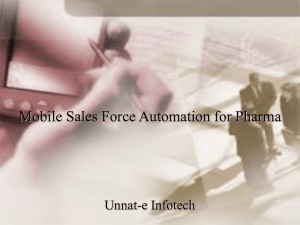
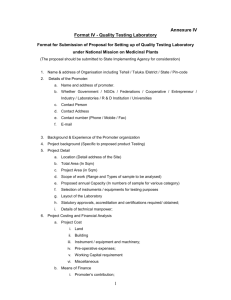
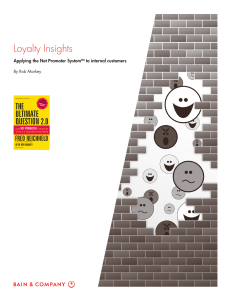
![2. Promoter – if applicable [2]](http://s3.studylib.net/store/data/007765802_2-78af5a536ba980fb6ded167217f5a2cf-300x300.png)

